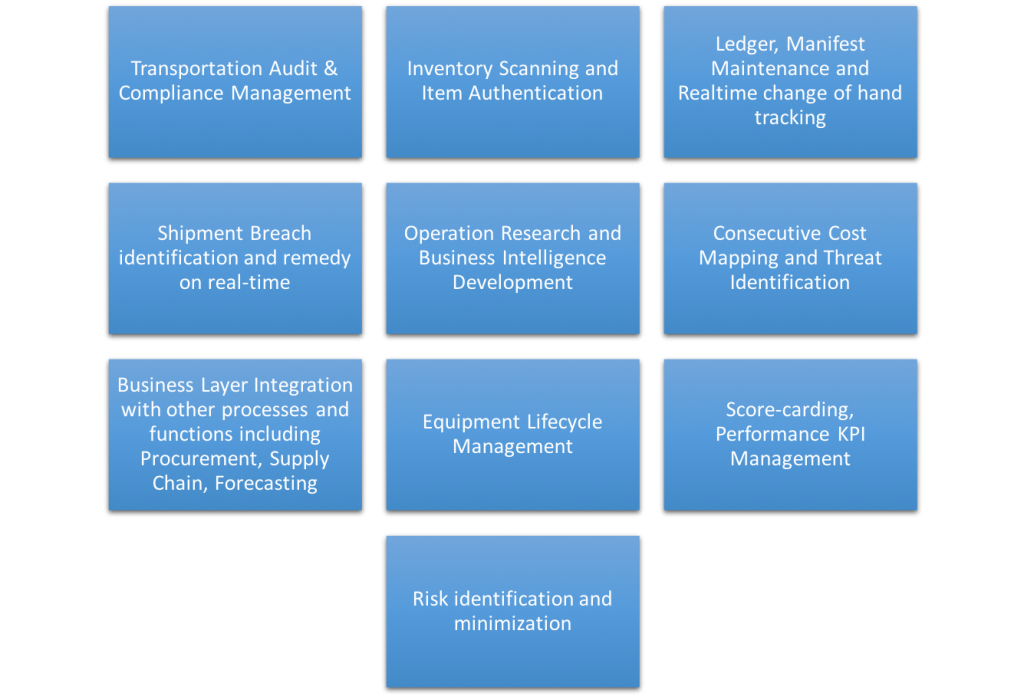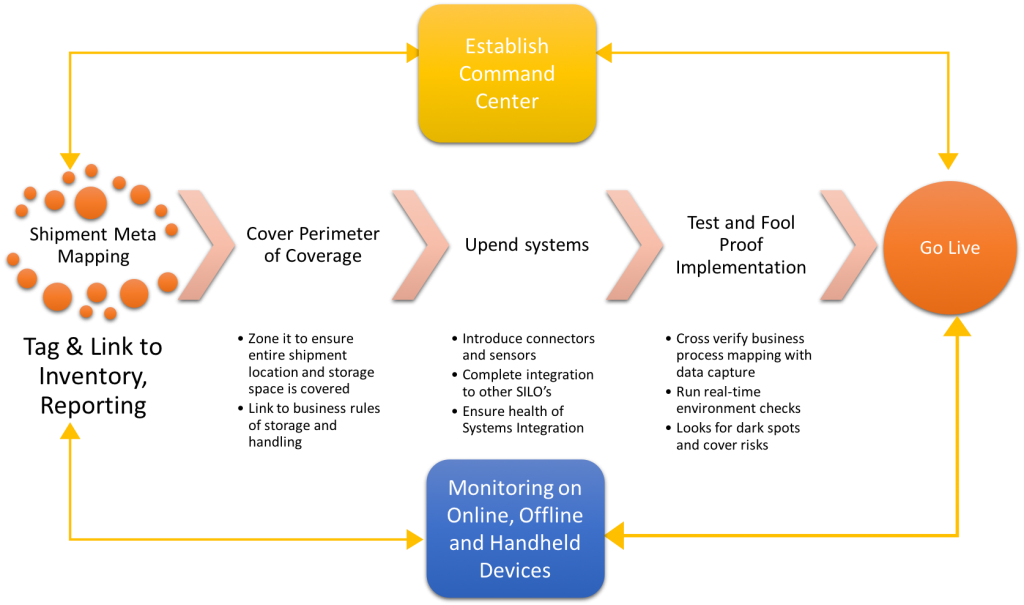Every system is always very mature when it’s being considered for a change.
That is foundational and fundamental, nothing is ever redundant unless some form of innovation impacts the business.
Whenever an innovation is bought into the equation, the quality of innovation will determine the longevity or relevancy of any process.
This opens up a few sets of recurring challenges…
- How to introduce change
- How to train resources in the new process
- How to measure the change metrics
Planning to implement IoT/Automation will also find such challenges to be addressed at a very early stage of engagement.
IoT requires capital expense like in any other IT project, only this time its budget depends on the process lifecycle and scope of implementation.
For the transportation and logistics industry, we are looking at the following as common scope of implementation for IoT/Automation
- Transportation Audit & Compliance Management
- Inventory Scanning and Item Authentication
- Ledger, Manifest Maintenance and Realtime change of hand tracking
- Shipment Breach identification and remedy on real-time
- Operation Research and Business Intelligence Development
- Consecutive Cost Mapping and Threat Identification
- Business Layer Integration with other processes and functions including Procurement, Supply Chain, Forecasting
- Equipment Lifecycle Management
- Score-carding, Performance KPI Management
- Risk identification and minimization

Naturally, the list can be long and will become exhaustive if we kept looking at the entire scope of what all can be done using IoT for the Transportation and Logistical Industry
As to how it gets implemented, the process is as follows:
- Process Mapping to Business Functions and Owners, including inventories
- Connecting to ERP/CRM and Logistical tracking systems to ensure data cross verification
- Implementation of QuicSolv propriety tags and sensors on the defined environment that ensure all angle coverage
- Integration of feeds back to purpose-designed dashboards

Nothings changes within the realm of business, the only change that you will experience is in how efficient your business has become.
Read more about all this in How does warehousing benefit better from implementing IoT? and How does IoT Automation Reduce Costs?
Feel free to connect with us: https://www.quicsolv.com if you want to discuss or share your ideas. We provide IoT services as well as IoT solutions based on our ISaE framework.


